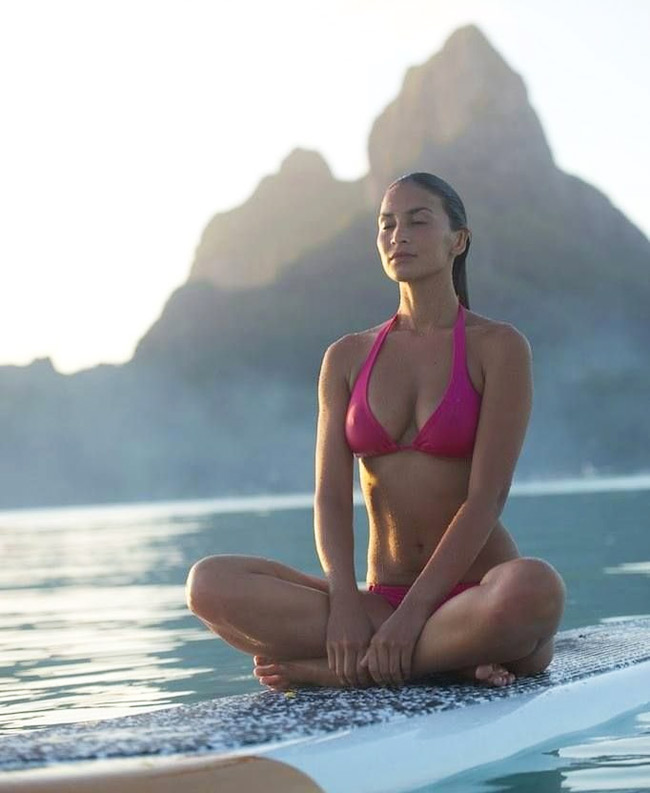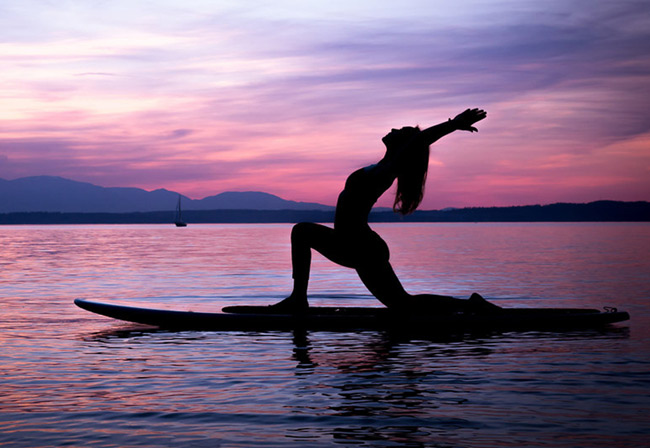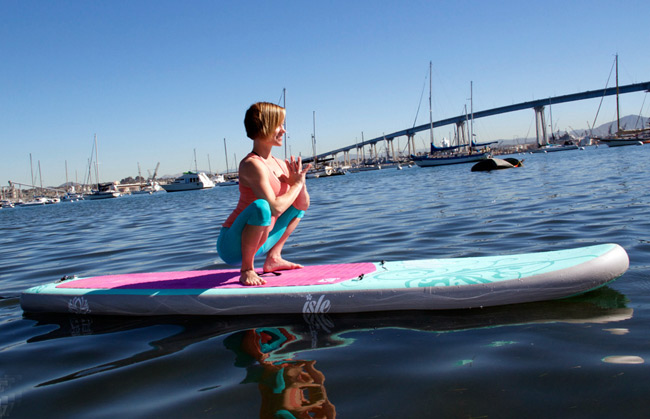Stand-Up Paddleboard (SUP): A Popular Yoga-Fitness Fusion

Standup paddleboard yoga (or SUP yoga, as it's known to its devotees) is asana practiced on 10 to 12-foot-long boards in the most serene of settings: an ocean bay, a glassy lake, even a slow-moving river. In recent years, water-loving yogis have embraced SUP yoga as a practice that brings a sense of joyful freedom to an otherwise earth-bound yoga practice.
If you are one of those who love open space and water, SUP yoga practice can be fun and exiting. SUP yoga requires a different quality of focus-and not just when you're doing the poses but also when you're transitioning between them. The wind and constant motion of the water will add to the intensity of your practice! Plus, the occasional passing bird, fish or dolphin will really mix up from a traditional land yoga practice.
- Downward-Facing Dog (Adho Mukha Svanasana): Start with the basics! This balancing, strengthening pose is widely known as a great place to start. To perform: Start on all fours with palms beneath shoulders and knees hip-distance apart. Spread your fingers wide, root down into the palms and place equal pressure on your fingertips and the base of your hand. Extend your arms straight. Press your chest back toward your legs as you straighten your knees and root down into the soles of your feet. Relax your neck, allowing the crown of your head to hang toward the yoga board. Take a few breaths in and out through your nose. What comes into view when you look back between the ankles is not the wall of a yoga studio. Instead, it's the cool, blue ocean meeting the sky.

- Crescent Lunge (Anjaneyasana) This pose strengthens your core and legs, stretches your hip extensors and improves your balance. To Perform: Start with one foot forward and the other leg extended back, your front knee bent at 90 degrees. Beginners should start with hands on the board by your front foot or at least one down and one up to stabilize you until you have the core control to stay aligned on the board. The toes of your back foot should point out to the side to stabilize your body. Lift your heart and lengthen your spine while reaching up toward the sky. Hold the pose for at least five breaths, and then switch sides.
- Chair Pose (Balasana): This pose builds strength in your legs and core. The closer your feet are the harder it is, so you can start with your feet hip distance or wider. To Perform: Sit on your heels. Keeping your hips on the heels, bend forward, and lower your forehead to the floor. Keep the arms alongside your body with hands on the floor, palms facing up. (If this is not comfortable, you can place one fist on top of another and rest your forehead on them.) Gently press your chest on the thighs. Hold. Slowly come up to sit on the heels, uncurling vertebra by vertebra and relax. Chair pose creates a sense of grounding, which can be challenging when you're on a moving board.

- Garland pose (Malasan): Garland pose opens your hips and low back, and brings your center of gravity toward your board. Start with your legs slightly wider than your hips and squat down with your feet flat on the ground. Straighten your spine and press your palms together in front of your chest. Draw your shoulder blades together and gently press your elbows on the inside of your knees to push them open. If this is too much, you can try to come up onto your toes.
- Corpse Pose (Savasana): on the board, ranslates to a sense of ease. Lying there with the ocean gently rocking your hands resting in the water while the sunshine warms your skin. Release both legs, softening the groins, and see that the legs are angled evenly relative to the mid-line of the torso, and that the feet turn out equally. Narrow the front pelvis and soften (but don't flatten) the lower back.
You really can't beat that feeling of freedom and serenity.
